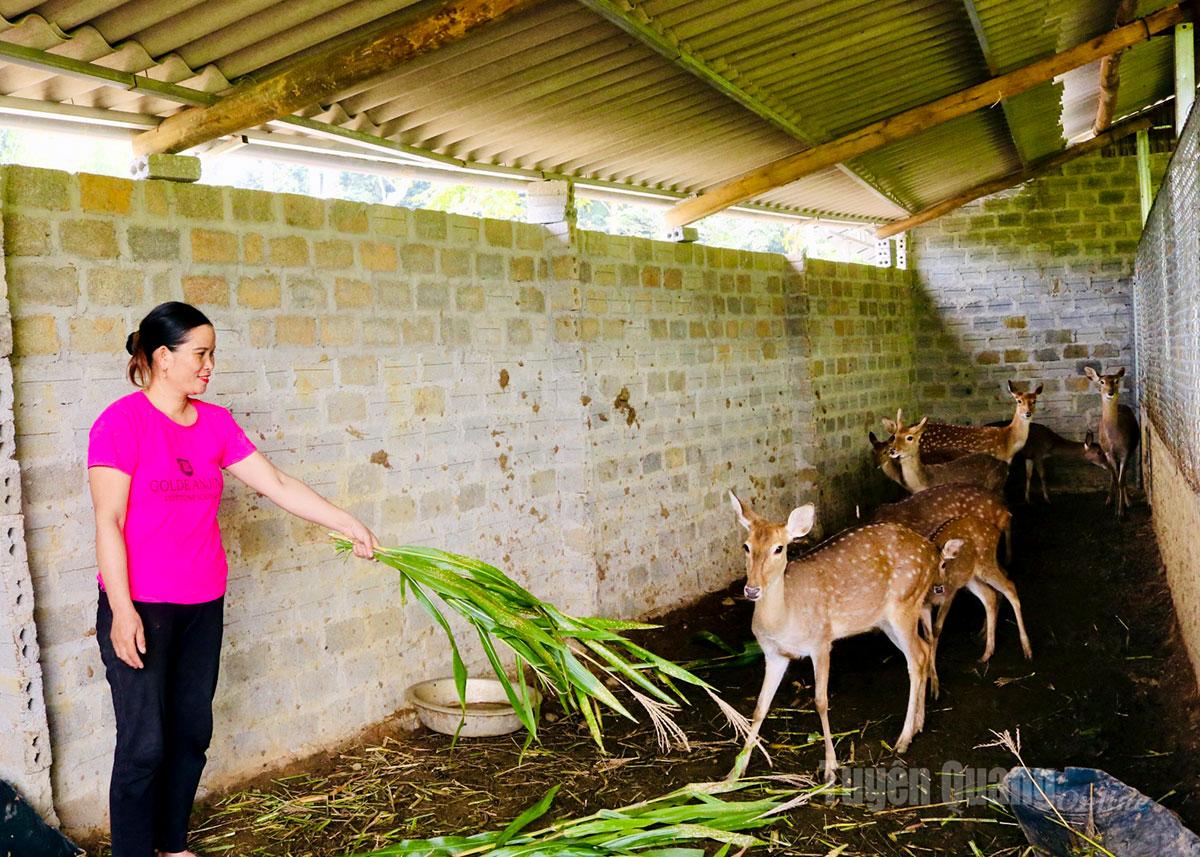Farming deer for antler velvet
In recent years, farming deer for velvet antler has emerged as a bright spot in rural economic development in Ha Giang 1 Ward, improving local livelihoods.
 |
| Ms. Hoang Thi Han, Group 29, Ha Giang 1 Ward, develops her economy from velvet antler deer farming. |
Ms. Hoang Thi Han’s family in Group 29 was among the first to raise velvet antler deer, investing over VND100 million in 2021 to purchase five deer. She notes that compared with pig or chicken farming, deer are less prone to disease, though proper care of housing and feed is essential. Deer pens are lined with rice husks and sawdust to prevent dampness, and tarps are used for warmth in winter. Their diet includes grass, neem leaves, mulberry leaves, and corn.
After several years, Ms. Han’s herd now includes eight pairs of deer, generating an average annual income of over VND80 million. She shares her experience with neighbors, encouraging others to invest in this new livestock model. Velvet antler deer are gentle, easy to raise, and adaptable. Female deer produce one fawn per year, while males are valued for their antlers, which fetch VND17–20 million annually. Mature males can yield antlers for over ten years. Healthy males are also kept for breeding, expanding the herd.
Seeing the potential, Mr. Nguyen Van Cu invested VND96 million in March to buy five deer from Tan Ha Ward, supported by local links for stable antler sales.
The model has boosted income and fostered collective economic development. In 2024, the Ha Giang 1 Velvet Antler Deer Cooperative was established with ten members and nearly 60 deer, facilitating experience exchange, technical support, and coordinated marketing, enhancing the value of this high-value local specialty.
Mr. Nguyen Thanh Dang, Chairman of Ha Giang 1 Farmers’ Association, said the model demonstrates residents’ initiative in rural economic development. Local authorities provide technical support, breeding stock, and market connections through cooperatives. Expanding this model not only increases income but also utilizes land resources efficiently, forms a complete value chain, and contributes to sustainable poverty reduction in the area.
Khanh Huyen





READER COMMENTS